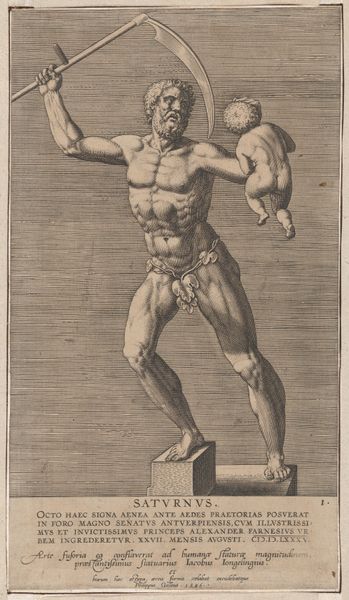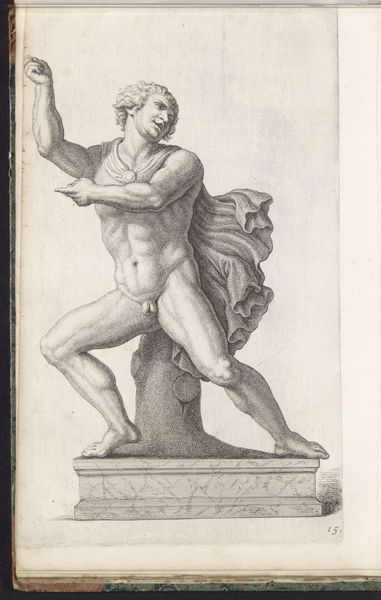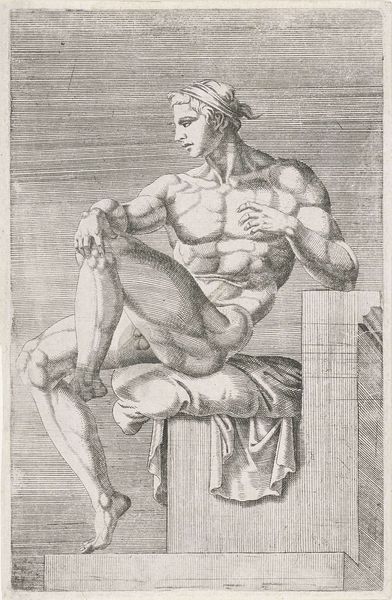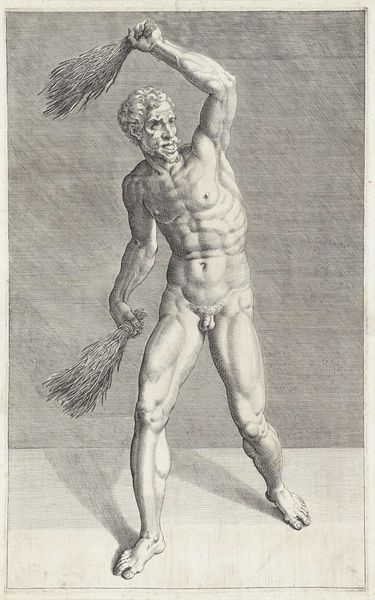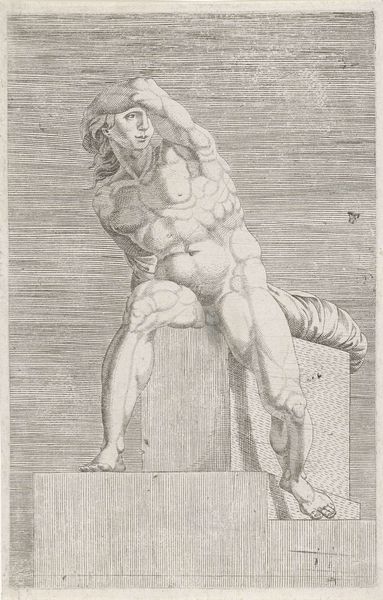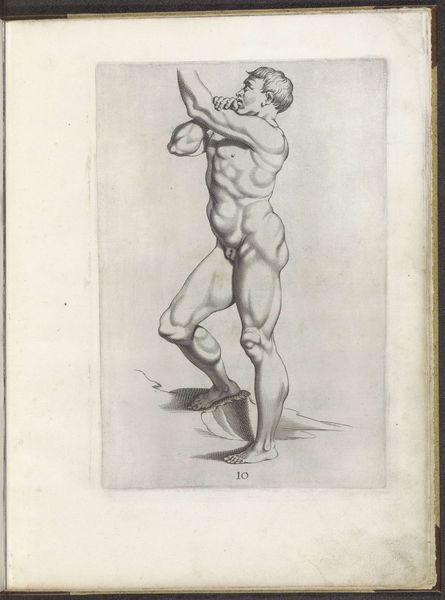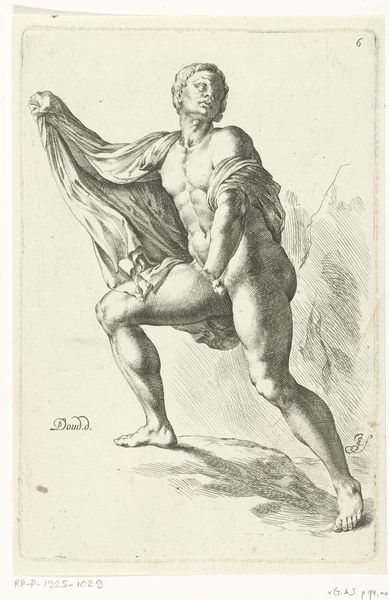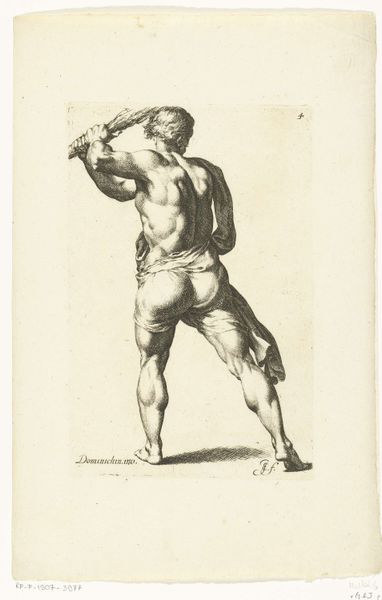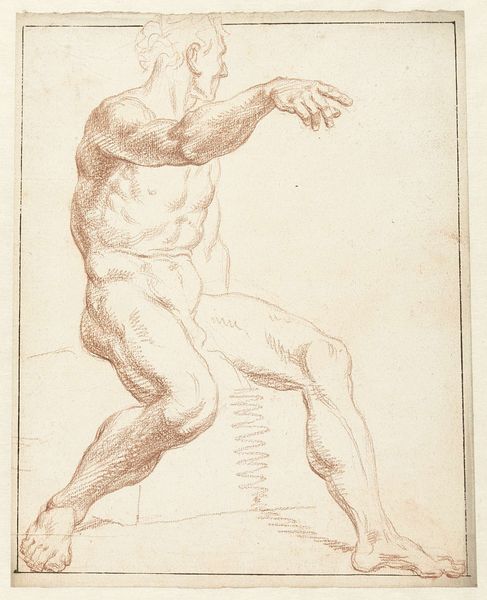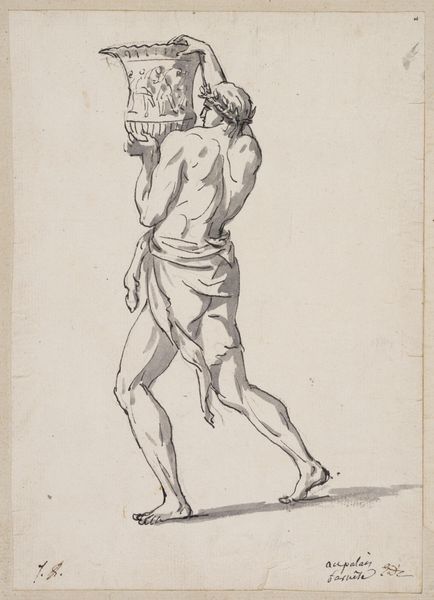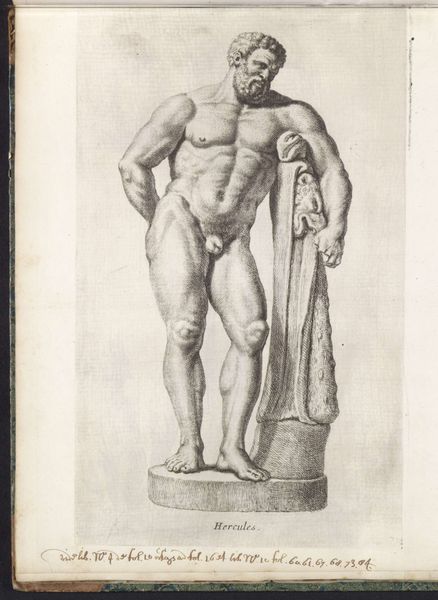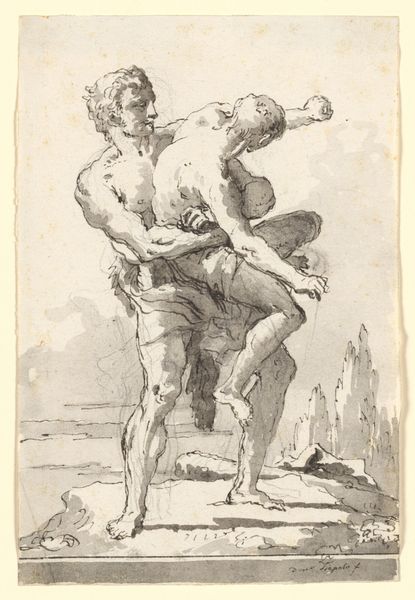
Dimensions: Image: 34 Ã 21.5 cm (13 3/8 Ã 8 7/16 in.) Sheet: 37.1 Ã 22.5 cm (14 5/8 Ã 8 7/8 in.)
Copyright: CC0 1.0
Curator: This print, entitled "Gladiator," comes to us from the hand of Simon Thomassin, a French artist born in the mid-17th century. It resides here at the Harvard Art Museums. Editor: It's arresting! The figure practically leaps off the page. The tension in the muscles, the forceful pose... I feel the energy of the arena. Curator: Indeed, Thomassin was known for his engravings after classical sculptures, so it's quite likely that this piece is a reproduction of an ancient statue. He was working in a time where the classical world was seen as this peak of civilization. Editor: The figure's nudity is striking, isn't it? It underscores a kind of vulnerability and hyper-masculinity at once. Who are we celebrating with such images, and why? Curator: These images helped disseminate ideas about the ideal male form, echoing Greco-Roman artistic conventions. They're not just aesthetic exercises; they are reinforcing particular social values and aesthetic norms. Editor: It's a stark reminder of how art can both reflect and shape our perceptions of power and the human body. It seems like a celebration, but also a kind of objectification. Curator: Precisely. Examining "Gladiator" in its historical context opens a window into the complex interplay between art, power, and cultural ideals. Editor: Absolutely. It's a visceral reminder that art is never truly neutral; it carries the weight of its time and continues to resonate today.
Comments
No comments
Be the first to comment and join the conversation on the ultimate creative platform.
